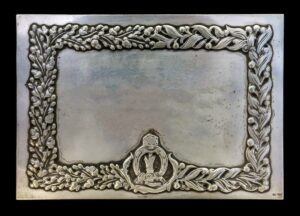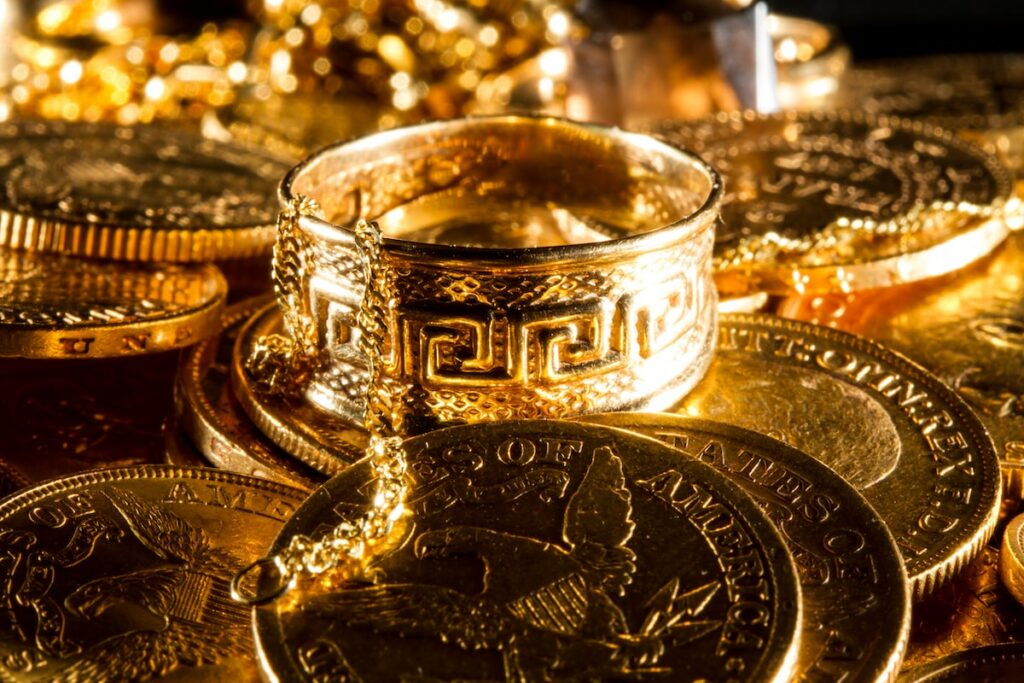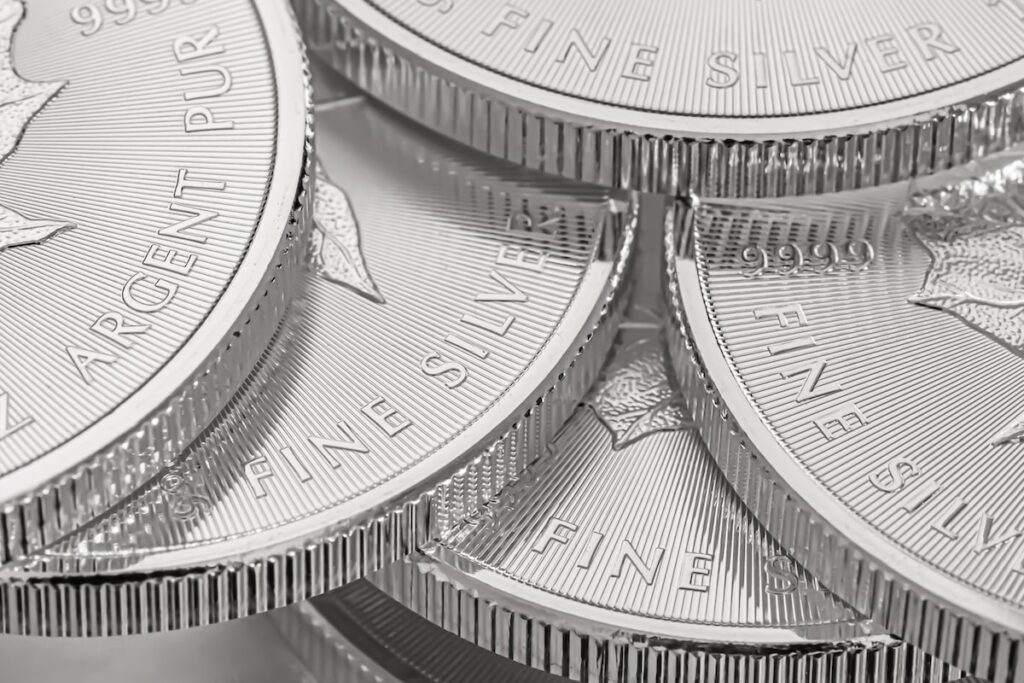In the world of jewelry and decorative art, there’s an enduring fascination with the allure of antiquity.
The weathered patina, the graceful aging, and the character of vintage pieces evoke a sense of history and timelessness.
When it comes to silver, one of the most revered and cherished metals, oxidation plays a vital role in achieving that coveted antique aesthetic.
Unveiling the art of adding an antique touch to silver requires understanding the intricate dance between time, chemistry, and craftsmanship.
Oxidizing silver involves applying chemicals or methods like liver of sulfur, egg yolk, or ammonia to create a controlled tarnish. It adds an antique touch by darkening the metal, enhancing texture, and highlighting intricate details.
In this article, we delve into silver oxidation, exploring the techniques, materials, and delicate balance required to breathe new life into this precious metal, transforming it into a relic of the past.
Understanding the Beauty of Silver Oxidation
Silver oxidation is a captivating process that unlocks the art of adding an antique touch to this precious metal.
It involves deliberately darkening the surface of silver to create a tarnished or patina effect, which enhances its visual appeal and imbues it with a sense of history and character.
One can appreciate the beauty of silver oxidation’s transformative power in breathing new life into silver jewelry and decorative pieces.
The allure of silver oxidation lies in its ability to bring out the intricate details and textures of the metal.
As the oxidizing agent reacts with the surface of silver, it creates a thin layer of darkened patina that settles into the recesses and crevices, accentuating the design and adding depth.
This subtle tarnish can highlight the contours, patterns, and engravings, giving the piece a sense of age and authenticity.
The resulting aesthetic is reminiscent of antique silverware and vintage jewelry, evoking a nostalgic charm that appeals to those with a penchant for the past.
Moreover, silver oxidation allows for creative expression and customization.
Artisans and jewelry makers can craft unique designs and achieve desired effects by controlling the extent and intensity of the oxidation process.
The possibilities are endless, from lightly tarnished edges to heavily oxidized surfaces, offering a wide range of artistic interpretations.
Whether adding a touch of antiquity to a modern piece or reviving a vintage item, silver oxidation enables artisans to create visually stunning and personalized works of art.
Exploring Traditional Techniques: Liver of Sulfur
The liver of sulfur is a traditional and widely used substance in the art of oxidizing silver.
It is a chemical compound that, when mixed with water, releases sulfur compounds capable of darkening the surface of silver.
This technique offers artists and craftsmen precise control over the oxidation process, allowing them to achieve a range of desired effects.
To use a liver of sulfur, it is typically dissolved in hot water to create a solution.
Depending on the desired effect, the silver piece is immersed in or brushed with the solution.
The duration of exposure determines the intensity of the oxidation, with longer immersion resulting in a deeper and darker patina.
The liver of sulfur can produce a variety of colors on silver, ranging from black to shades of blue, purple, or even iridescent hues.
This versatility makes it a favored choice for artisans looking to create unique and visually striking oxidized silver pieces.
While working with a liver of sulfur, it is essential to follow safety precautions.
Proper ventilation is crucial, as the fumes can be toxic.
Additionally, protective gloves and eyewear should be worn to avoid direct contact with the solution.
Exploring the traditional technique of liver of sulfur provides artists and craftsmen with a tried-and-true method to oxidize silver effectively.
Its versatility, controlled results and ability to create a range of captivating colors make it an invaluable tool in unlocking the art of adding an antique touch to silver creations.
Unconventional Methods: Egg Yolk and Ammonia
In addition to traditional techniques like liver of sulfur, unconventional methods can oxidize silver and achieve unique antique effects.
Two such methods involve the use of egg yolk and ammonia.
Egg yolk is known for its natural sulfur content, which can react with silver to produce a tarnished appearance.
To utilize this method, the yolk of an egg is separated from the egg white, and the yolk is then beaten until it becomes a smooth consistency.
The silver piece is gently brushed or dipped into the egg yolk, covering all areas.
Afterward, the silver is left to air dry or undergoes a controlled heating process.
Over time, the sulfur in the egg yolk reacts with the silver, resulting in an attractive antique patina.
Ammonia, a common household cleaning agent, can also oxidize silver.
This method involves creating a fume chamber by placing the silver item in a covered container and a small dish or fabric soaked in ammonia.
The fumes generated by the ammonia react with the silver, causing it to darken.
The duration of exposure determines the intensity of the oxidation, and the process can be repeated until the desired effect is achieved.
It is important to note that proper ventilation is crucial when working with ammonia to ensure safety.
By exploring these unconventional methods of oxidizing silver, artisans can experiment with alternative approaches and unlock new possibilities for creating unique antique finishes.
These methods offer opportunities to achieve distinct textures, colors, and visual effects, allowing for greater creativity and individuality in adding an antique touch to silver creations.
Step-by-Step Guide: Oxidizing Silver at Home
Oxidizing silver at home can be a rewarding and creative process.
Here is a step-by-step guide to help you achieve the desired antique touch on your silver pieces:
- Prepare your workspace: Find a well-ventilated area with a stable work surface. Ensure you have all the necessary materials and equipment within reach.
- Choose your method: Select a method for oxidizing silver that suits your preferences and available resources. Traditional options like liver of sulfur or unconventional methods like egg yolk or ammonia can be used.
- Clean the silver: Clean the silver piece thoroughly to remove dirt, oils, or debris. Use a mild soap, warm water, and a soft cloth to gently clean the surface. Ensure it is completely dry before proceeding.
- Set up your oxidizing solution: If you’re using a liver of sulfur, follow the instructions to create a solution by dissolving it in hot water. If you’ve chosen an alternative method, such as egg yolk or ammonia, prepare the necessary mixtures as mentioned in the specific technique.
- Apply the solution: Immerse the silver piece in the oxidizing solution or use a brush to apply it evenly onto the surface, depending on your chosen method. Be careful not to submerge any non-silver components (e.g., gemstones or delicate elements) that may be affected by the solution.
- Observe and control the oxidation: Monitor the silver closely as it reacts to the oxidizing agent. The duration of exposure will determine the intensity of the patina. You can achieve various shades by adjusting the time accordingly. Remember to follow safety precautions, especially if working with chemicals or fumes.
- Rinse and neutralize: Once the desired oxidation is achieved, rinse the silver piece thoroughly under running water to remove the oxidizing solution. You can use a soft brush to gently clean hard-to-reach areas. It’s essential to neutralize the piece if instructed by the specific method you’ve used, following the recommended steps.
- Dry and assess: Paint the silver piece dry with a soft cloth after rinsing. Take a moment to assess the results and make necessary adjustments or touch-ups if desired. The oxidized silver should now exhibit the antique aesthetic you were aiming for.
- Optional: Seal or protect the finish: If you wish to preserve the oxidized finish, consider applying a protective coating or sealant specifically designed for silver. This step can help prolong the lifespan of the patina and prevent it from wearing off over time.
With this step-by-step guide, you can confidently begin oxidizing silver at home, exploring various techniques and bringing an enchanting antique touch to your silver jewelry and decorative pieces.
Remember to experiment, exercise caution, and enjoy the creative process.




